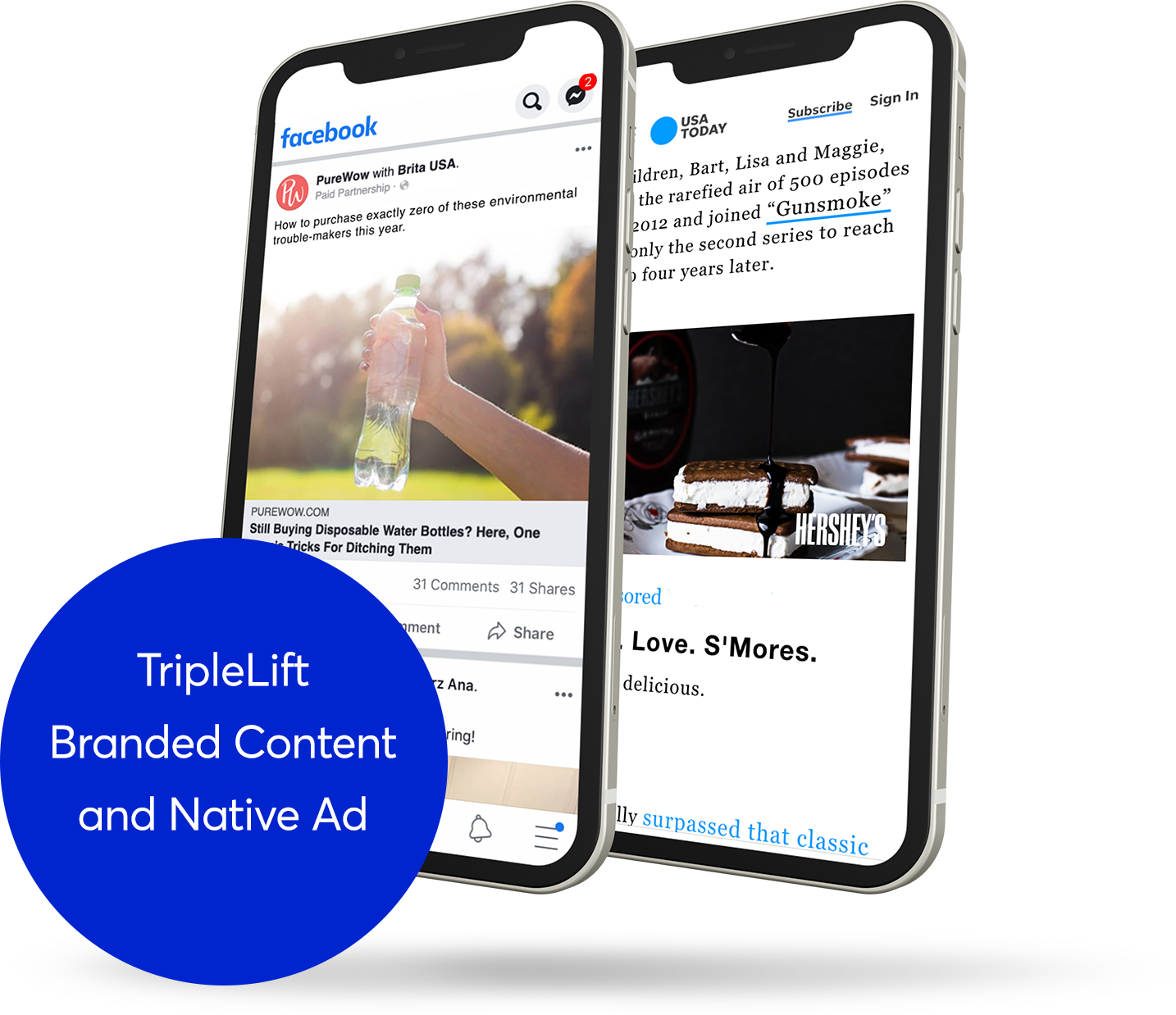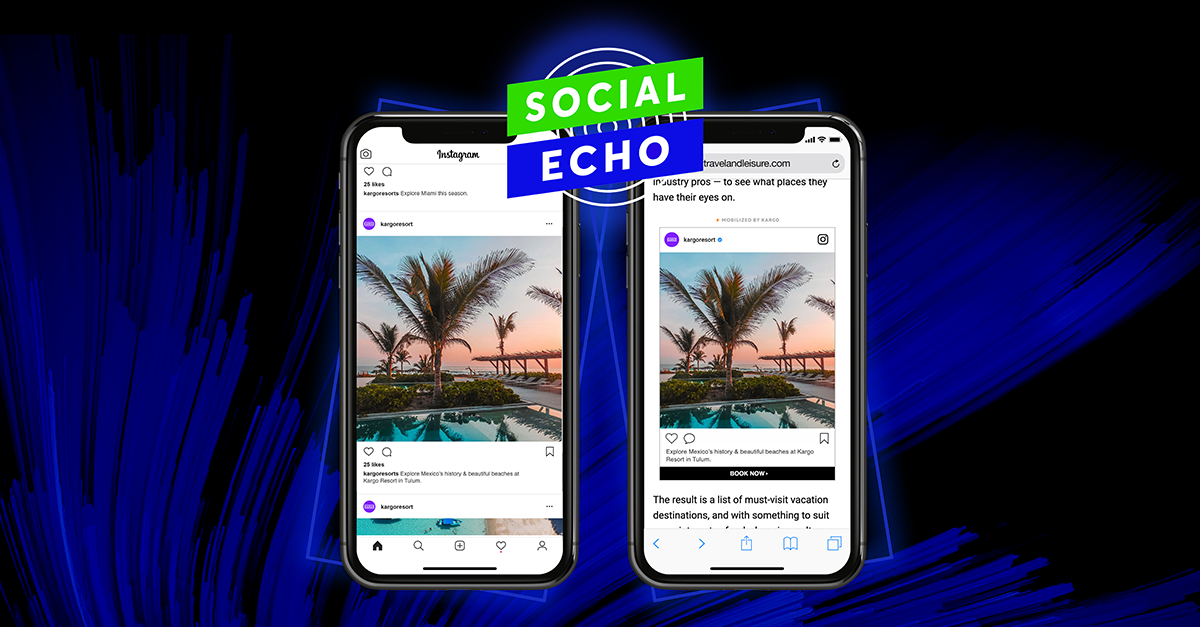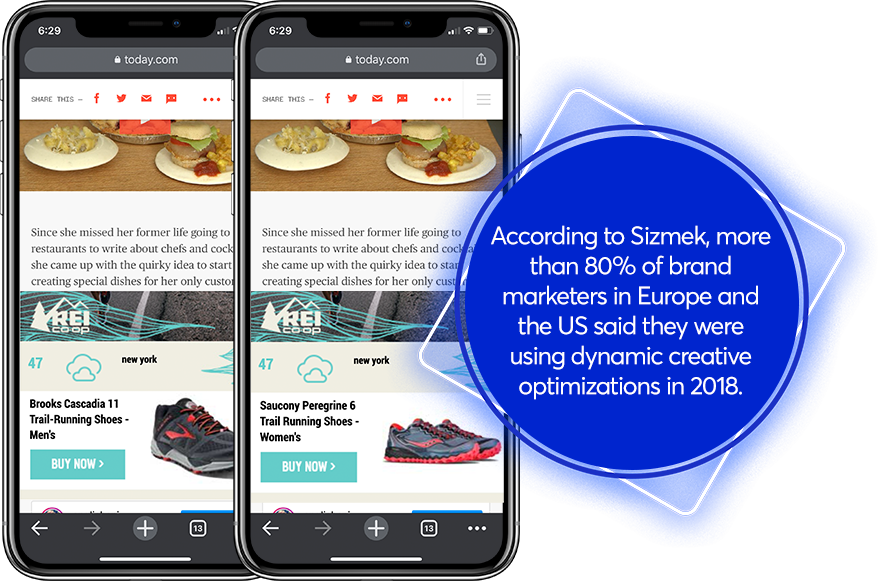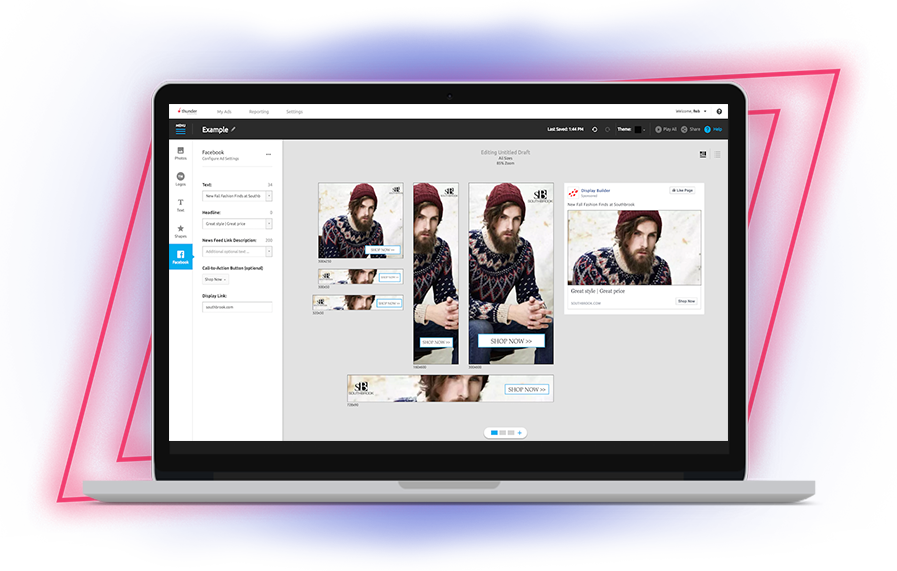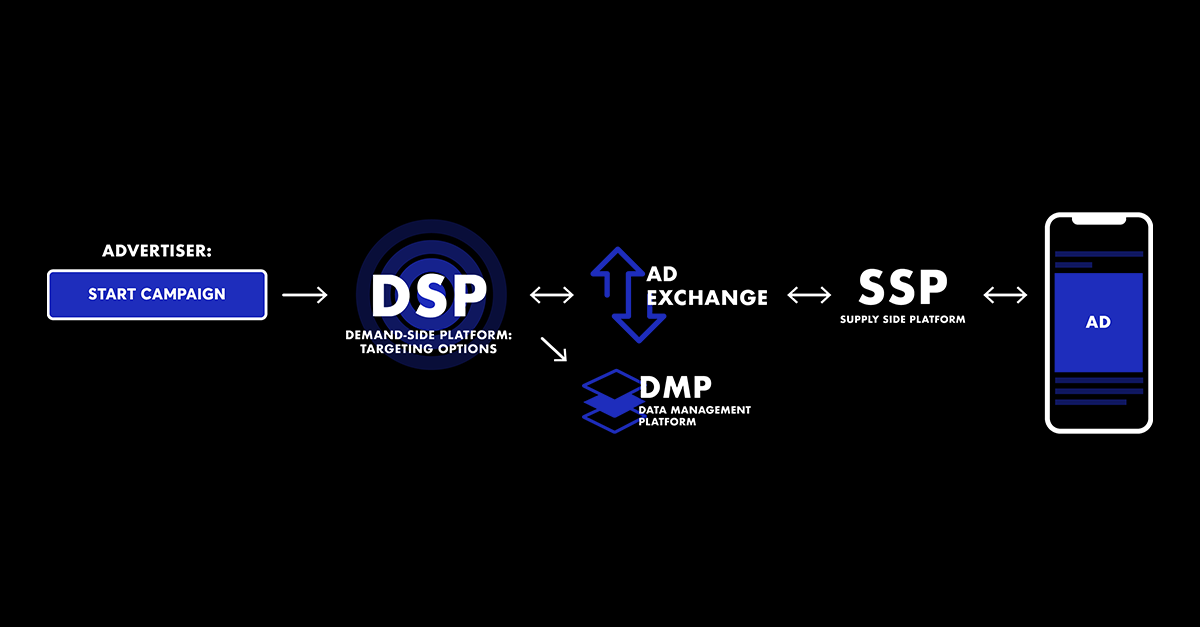Mobile Creative In Digital Advertising
A comprehensive guide to the creative process and key players involved
The Creative
‘i.e’ the ad that somebody hopefully notices, likes and maybe responds to or is moved by in some fashion - is akin to the quarterback in advertising. Creative gets too much of the credit when things go right, and too much of the blame when things go wrong.
But for too long, those dynamics have been flipped on their head. The creative was often an afterthought in a medium driven by media buying - and increasingly data and targeting. The question of ‘How to make great digital ads?’ has received too little attention, investment, innovation or research.
Yet advertisers are continuing to pump out more ads, and more varieties of ad types on an expanding number of platforms. Not long ago, a marketer might create a handful of display ads (i.e banners), many of which were the equivalent of pared-down print ads. They would traffic these to individual publishers and hope they would reach the right target - or they would blast them across the web using ad networks.
That was if the marketer in question actually cared about building a brand using the web. Too often, digital advertising has been dominated by direct-response advertisers - and their tactics were almost exclusively centered on retargeting. So much of what these brands were trying to accomplish was to hit digital shoppers who had just contemplated buying a pair of shoes or booking a hotel room or signing up for auto insurance that the ad creative itself was nothing more than a means to an end. Some companies doing this most effectively include Criteo & Amazon.
But as more consumers spend the bulk of their time with digital media on a variety of screens, leaders in the ad industry are recognizing the need to use digital and mobile to tell stories and move hearts and minds.
Moreover, the fundamental conditions that had propped up so much of the digital ad marketplace - using consumer data to retarget them, or zap individual ads to individual web surfers - are morphing suddenly and rapidly, which provides an opening for a digital creative renaissance.
Premise
Therefore, this document will attempt to serve two purposes.
First, we hope this provides a comprehensive resource for ad and media executives across the spectrum looking to understand how the creative process works and all the players and processes involved.
Second, we hope to call attention to a potential tipping point in the ad industry and stir a rallying cry for a return to creative-first advertising. Digital advertising creative has so much upside, but brands need to recognize where it’s falling short and why it’s been neglected. As more brands re-examine how to reach consumers in the next decade, they will likely have to reassess the role of digital creative in brand and performance advertising. We are on the cusp of a new era that blends the brilliance of data-driven, scientific marketing tactics with a return to the value of contextual targeting and storytelling fundamentals. But we all have to do our part.
We believe that digital ads will become more impactful, more innovative and more valued by marketers. Think about the biggest brand successes over the past five years: companies like Uber, Airbnb and others are built mobile-first. Advertising has some catching up to do.
That means that industry decision makers - CMOs, Chief Creative Officers, etc. -need to champion mobile creative from the get-go. That requires advocating for big changes to the creative design process, production, measurement, etc. -as well as pushing leaders to challenge conventional wisdom and creative inertia - two very tall tasks.
But doing bold work is why we got into the ad business in the first place!
Key Definitions
First, some basics. Let’s define the standard types of digital ads:
DISPLAY
These are the classic image ads you see all over the internet. These largely static ads are delivered in standard rectangle and square slots on sites across the web. Think good-old-fashioned banners that run on both desktop and mobile websites.
RICh MEDIA
This technology is primarily used to enhance display advertising by making it more vibrant, more animated - and less static. Specialists include Kargo, GumGum, and Undertone.
NATIVE ADS
These formats are generally designed to either blend into individual web pages - replicating their look and feel - or in some cases actually emulate a publisher’s editorial product. The idea is that they are ‘native’ (as opposed to foreign) to a site or app. Perhaps the most prominent example of native ads are found on social platforms.
Instead of running traditional banners or interrupting videos, Facebook ads take the form of Facebook posts. Twitter ads are ‘Promoted Tweets,’ Pinterest ads are ‘Promoted Pins,’ Google ads look just like organic search listings, and so on.
In the open web, companies such as TripleLift, deliver ads that are designed to appear within typical editorial sections or feeds, and are often assembled in real time to match a particular site’s design.
Meanwhile, publishers like BuzzFeed and Forbes have over the past few years popularized the sponsored post - i.e. content developed on behalf of a brand that is distributed alongside editorial content - and can easily be shared through social channels. Native ad companies such as Nativo distribute sponsored content for brands across numerous websites.
VIDEO
Simply put, as more people consume video on the web, more advertisers are running video ads. Often this takes the form of pre-roll ads - or those YouTube ads that play before video clips that you skip after 6 seconds - and typically this creative is repurposed from TV commercial spots. Many publishers also deliver ‘outstream’ ads - or video ads that start when people scroll to a certain point on a web page, whether they are watching the video or not.
STORY ADS
These ads have been popularized by Snap and Instagram - just like Stories created by consumers, these mobile-first ads take up a person’s full screen, and are designed to be “tapped through’. Increasingly, Story Ads are incorporating shopping functionality. Stories are now popping up on Facebook, Linkedin and even publishers’ sites.
Creative Production 101
In the traditional ad agency world, creative departments historically drove the business, and creative directors (think Don Draper) set the tone in terms of messaging strategy and how brands defined themselves. In other words, people who made the ads set the agenda.
Many agencies built sophisticated in-house production teams, or hired out pricey independent studios to make ads. It wasn’t uncommon for major TV advertisers to spend millions on 30-second ads, including pricey on-location shoots and celebrity talent.
When digital advertising exploded in the late 90’s, the dynamics flipped. Suddenly media departments drove the strategy and media buyers negotiated the deals. Generally speaking, the focus was on securing as much ad inventory as possible, since their objective was piling up impressions and hitting specific audiences on as many outlets as possible.
As the technological infrastructure of digital advertising became established via the IAB standards and ad serving technologies like Google’s Ad Manager (now Google Ads), tech made scaling easy.
The growth of programmatic advertising only accelerated these trends. Media buyers needed volume, and as a result, plans got dumped on creative teams’ laps. Here are a thousand different banner variations to produce - have at it.
This increased production workloads as well as the associated trafficking burden and led to an explosion in specialty production firms, as the need to outsource and automate time-consuming, redundant tasks became overwhelming.
Who makes the ads, and who manages the production cycle, is constantly evolving.
But the burden on production teams shows no sign of slowing.
Creative Production Challenges
In 2020, most advertisers’ digital creative output is soaring, and the playing field is becoming far more crowded and complicated.
“So many people stop and start with banner ads, but there are so many elements of digital creative, from basic search ads to email to branded content to YouTube pre-rolls,” said Ken Kraemer, Managing Partner at Rebellion Design Co.
“But of course, display ads are crucial.”
Kraemer explained that compared to five years ago, the average advertiser is churning out far more assets than before. But not all of that output lies with creative agencies. These companies are still focused on the ‘big idea’ so to speak - but a slew of intermediaries have sprung up that can make ads ‘fast and cheap.’
“I wouldn’t even call that creative necessarily,” he said. “It’s pure production.”
More advertisers are using templates and product feeds to automatically populate hundreds, if not thousands, of ads. E-commerce brands utilize tools to build ads by pulling images and prices from their sites, while fashion brands build ads in a similar manner by pulling from digital photo databases.
Much of this output isn’t what traditional agencies are built for. Nor is it necessarily designed with branding in mind.
“We used to try five units with five messages and see what performs,” said Kraemer. “Now the trend is a lot more assets and a lot more automated testing.”
That of course includes the giant social platforms, particularly Facebook and its sister app Instagram. It’s increasingly common for marketers to provide these platforms with half a dozen to a dozen ad variations, “and they tell you what worked.”
For instance, in mid 2020 Snap announced a new product, Dynamic Product Ads, which allows brands to essentially upload their entire product catalogues, which Snap will automatically turn into templated ads targeted to specific user groups.
“There has been so much innovation in digital media, and almost no innovation in connecting creative output to that media,” said Melinda McLaughlin, CMO at Extreme Reach, which specializes in managing video ad creative for brands.
“There is so much manual work behind the scenes just to get ads where they are supposed to go.”
McLaughlin said it’s not uncommon for big brands to have one thousand ad variations for a campaign - just for video. Yet the existing digital ad infrastructure isn’t designed to efficiently handle that sort of distribution, since every new ad type, platform or operating system has new requirements, and doesn’t necessarily connect with everything else a brand manages.
“If you started advertising today you’d build everything completely differently,” she said.
Mobile Creative:
Challenges and Opportunities
Historically, developing advertising creative for mobile sites and apps has been an afterthought for many marketers. Even as mobile traffic has surpassed desktop traffic in the US, many brands’ digital creative output is desktop-centric. Despite the medium’s massive growth, insiders contend there is not nearly enough ‘built-for mobile’ advertising.
eMarketer predicts that mobile ad spending will climb by 4.8% in 2020 to $91.5 billion. Mobile is expected to account for 68.0% of digital ad spending this year.
Yet, outside of the major social platforms, ads on mobile sites have largely been limited to repurposed banners, buttons and occasionally video interstitials. It’s not uncommon for these ads to be oversized or not even work well in mobile environments, in spite of the fact that in the US, the mobile web reaches 229 million users each month - which collectively is 45% larger than Facebook, according to a 2019 study conducted by Verto on behalf of Kargo.
“When it comes to mobile, unfortunately we’re still seeing the same stuff being reused poorly, or even modern day pop-ups,” said Kraemer. “The standards we’ve developed and transported from desktop haven’t helped mobile.”
Common shortfalls when repurposing desktop ads for mobile:
Poor user experience
Large file sizes
Flawed response data
However, there are some exceptions to repurposing ads in general, as some companies have successfully created tools to repurpose existing and high performing social assets to reach mobile web audiences (Polar, Kargo’s Social Echo)
Tips for Creating a Great Mobile Ad
While there is no exact formula for producing a great piece of creative (after all, there is a lot of art in advertising, and humans are unpredictable), there are several elements and tactics that have consistently proven to enhance the performance of ads - particularly in such a unique medium as mobile.
Top performing ads adhere to as many relevant principles as possible:
Make Sure People Can See Your Brand’s Logo
This is perhaps a bit obvious, but an often overlooked principle in mobile creative design is logo presence. As previously discussed, an advertiser may only have a very brief window of opportunity to capture the attention of your audience. If nothing else, they need to make sure people know which brand is being advertised. Whether users see your ad for half a second or ten, it’s crucial that a brand’s logo be featured prominently.
What People See at the Top of an Ad Really Matters
Logo presence is absolutely necessary, but where it appears is also key. Research shows that users are often more likely to notice a logo when it is placed at the top of the ad. When advertisers are looking to ensure ad recall, just remember that top of creative means top of mind.
Make Sure People Can See Your Product Too
Another obvious but overlooked principle is to make sure mobile ads feature a brand’s product front and center. This is especially true when you are looking to drive purchase intent. When users see your ad, you want to make it absolutely clear what you are actually selling at that moment. Thus, having your ad product-focused is a key element in your mobile creative design.
Stick to One Brand
Mobile ads are - let’s face it - small, at least compared to a 30-second ad on a big screen TV. Therefore, resist the temptation to pack too much in, such as a family of brands or complementary products. Therefore, avoid dual branding, multiple logos, or assets that may take away from your brand, which should be the star. In mobile, there is no room for distraction or confusion!
Get to the Point
Similarly, mobile screens are not the place for complex backstories or messages that are tough to unpack. It’s crucial that advertisers employ clear, distinct and singular messaging. Remember that you may only have a brief moment to capture your users’ attention. Stick to your campaign’s key message and reduce clutter.
Tell People to Do Something
In the moment that you’ve captured your audience’s attention with your clear messaging and excellent mobile creative, you want to invoke some response. They have a personal, data-rich device in their hands, after all. So feature a prominent and clear call to action. Providing a place for them to click to “buy now” or “learn more” makes it clear how users can and should respond to your offering.
It’s Time to Make Your Mobile Ads Animated and Interactive
Gone are the days of basic, static display advertisements. If you want to hold your users’ attention, animation and interactivity are key - particularly when they are used to take advantage of mobile’s unique navigation and capabilities. This is not limited to gamification. Having interactive ads, or ‘scroll reactive’ ads is a great way to capture and hold your audience’s attention. Interactive elements can be playful, fun, and in a world where seconds count can significantly boost your ad’s performance.
Make People Laugh
Invoking some sort of emotional response from your audience is a great way to grab their attention and improve ad recall. What better way to do this than with a little bit of humor? Not only do your ads become relatable, but consumers will also find them more enjoyable, and it’s a great way to have a bit of fun.
Don’t Be Afraid to Make Your Ads Pretty
With text-heavy articles and the quick-scrolling nature of the mobile device, users are more likely to notice a beautiful, bold image versus an ad full of lengthy blocks of text. This visual stimulation acts as a contrast against the site content – allowing the imagery to tell the brand story.
Keep the User Experience at the Forefront
A great ad unit blends seamlessly into the content that users are actively engaged with while capturing the attention of the user. The biggest “hotspots” on a mobile device are in the middle or towards the bottom of the screen. Primary functions, such as swiping through a product carousel should be kept near the middle of the screen. While secondary functions, such as tapping a call-to-action, should be kept near the bottom. The ultimate goal is to ensure users are able to easily interact with the unit without frustration.
Creative Meets Programmatic
According to eMarketer, by 2022, 88% of the expected $95 billion that will be spent by US advertisers on display advertising will be purchased programmatically. It’s unlikely that digital advertising is heading back to an era when every ad is handcrafted and custom fit to individual web publishers.
“There is this popular narrative regarding creativity versus machines, and how they are fundamentally at odds - and that means the death of creativity,” said Jason Musante Chief Creative Officer at Huge. “That’s just not true.”
If anything, Musante said, creative executives are craving more information on their target audience, they want their ads to be seen - and it’s rewarding and gratifying to feel like they are working. More data is good.
“When you think about the emergence of any technology, it’s always driven by trying to lower cost while increasing efficiency,” he said. “That’s a good thing! That gives us more time to work on big ideas, and get smarter about the work. Why make stuff you don’t want people to see?”
Creative Optimization
Using real-time technology, advertisers can now optimize for performance programmatically - no matter the goal. This process is typically powered by multivariate testing. Basically, by having numerous distinct creatives running in parallel, the technology can identify what is working, what is not working, and shift the dollars accordingly.
This process, called “creative optimization” is becoming more standard, yet needs work. For the past decade or so, more and more marketers have started to test multiple creative executions programmatically, and they are using these programmatic channels and data to optimize in real time, but this is a fairly blunt approach that is often dictated by imperfect metrics like click-through rates.
Many agencies have begun outsourcing these tasks to speciality firms, said Musante. “You need experts who are always thinking about campaigns being adjusted and readjusted and are solely focused on how the headlines and visuals can be swapped out,” he said. “That allows the creative agency to focus on ideas and what we do best.”
DCOs and CMPs
Dynamic Creative Optimization
Dynamic Creative Optimization companies can assemble digital ads such as banners in real time by automatically pulling together a select number of assets - headlines, images, colors - in real time.
For example, coffee brands might show iced coffee ads to people in regions of the country that are currently above a certain temperature using real-time weather data, while showing the rest of the audience ads for hot coffee.
Creative Management Platforms
Creative Management Platforms are used by designers to keep track of all of a company’s versioning of all their creative work in one place, to manage production processes and gauge how these different units are performing.
CMPs include companies such as Flashtalking, Thunder, and Celtra.
Mobile App Marketplace
Mobile apps are a different ad universe
Mobile Apps are a different ad universe that tends to be dominated by games. As a result, the predominant form of advertising is by app developers seeking app downloads - with traditional brands finding themselves crowded out.
Macro Changes in Data and Targeting
The traditional ad targeting ecosystem and its means of operating is going through massive changes, all of which are impacting mobile ads, and of course creative:
Regulations such as GDPR and CCPA are putting more burden on advertisers and publishers to have clear consent from users when employing their data
Tech giants like Google and Apple are threatening to cut off traditional means of tracking individual users via cookies or mobile IDs (e.g. iOS 14’s deprecation of IDFA’s)
A series of data breaches and other high profile news stories have made consumers more aware of how they are being tracked online - and generally wary
Brands are leaning into first-party data and away from retargeting and attempting to reach people ‘one on one.’
We’re already seeing this play out in the industry. A recent article by Wired even made the case that advertisers need to fundamentally question the value of microtargeting or data-driven digital advertising overall.
“Most people don’t think most of the messaging they get is relevant or meaningful to them, despite copious data collection,” found a 2019 eMarketer report on marketing personalization.
While it’s doubtful that social giants like Facebook will pull back on using user data for targeting, the shift towards contextual may mean a de-emphasis on cookie-targeted creative. If brands can’t target individuals with exacting (often unwelcome) precision, the more they’ll lean on creativity to create demand and appeal to broader swaths of people.
That likely means advertisers will focus more on digital ads that excel at storytelling, requiring newer, better forms of measurement. This bodes well for contextual ad targeting’s future in digital branding.
Contextual Ad Targeting
Contextual is poised to make a comeback
Traditionally, contextual advertising was focused on delivering ads that are deemed relevant to the content of a particular web page based on the appearance of specific keywords. For instance, Google AdSense delivers small text ads at the base of millions of web pages. An article about professional golf tournaments might feature a short text ad from Dick’s Sporting Goods prompting a user to click to buy golf clubs.
About a decade ago, several web giants, including Microsoft, made a big push into more sophisticated forms of contextual ads, looking to employ article sentiment analysis and image recognition to deliver ads that were deemed even more relevant to consumers, but this sector was quickly eclipsed by audience - based buying and programmatic.
In more recent years, companies such as Grapeshot (acquired by Oracle in 2019) have looked to meld contextual targeting and programmatic ad buying. As advertisers gradually move away from employing cookies and other digital identifiers to target specific individuals, contextual tactics are getting a second look.
One of the promises of the growth of data-driven advertising is that it can put more power in the hands of consumers,” said Musante. “Instead of people saying they hate ads, we can now tell them you’re not gonna see ads you hate.”
Ever get the feeling you’re being chased around the web with ads for something you briefly looked at on a retailer’s site? This incessant retargeting has led to digital ads getting a bad rap overall “When you don’t want tracking it’s bad, but when you opt in, everyone wants to see what they want to see.”
That may lend itself to contextual ad delivery. However, contextual in this case doesn’t have to mean a return to a less scientific targeting strategy (e.g. running ads on a sports site hoping to reach men). In fact, as the climate surrounding consumer privacy and data shifts, the industry is starting to adopt more creative uses of programmatic technology - and applying it to more traditional branding tactics.
Contextual is poised to make a comeback
For example, IBM has made a massive investment in this realm via its Watson artificial intelligence platform. The company’s Predictive Audiences product promises to identify groups of web users based on their common behaviors and characteristics - without having to know any personal information about them - and can deliver more relevant ads to those users in the right context.
Another example of innovative contextual targeting capabilities can be found within Kargo’s very own Social Canvas Product.
Consider that almost 40% of articles on the open web include some sort of social embed. Brands can now automatically run relevant ads alongside social media posts that are embedded on pages across the web - in realtime.
For example, if a Kardashian posts a picture to Instagram that features a beauty product - that brand can immediately run ads alongside that post whenever and wherever a publisher embeds it.
Brands have found these tactics to deliver 36% higher viewability than the average mobile campaign, as well as 58% longer dwell time.
Ad Buyers Want Control and Transparency
Given the current climate, advertisers are seeking access to more exclusive ad inventory or direct connections to specific publishers or users. This has led some brands to adopt more direct access to specific ad space, with fewer middlemen (also known as Supply Path Optimization).
That potentially changes how ad creative is evaluated.
“The window of optimization has really started to close,” said Musante. “There’s more pressure on creative than ever. So knowing who your audience is, and how they got on board, and how you got to them is so important.”
Measurement
First, let’s define some typical digital ad performance metrics:
Click-Through Rate:
How many times an ad gets clicked on compared to how often it appears on a website, app, search result etc. Historically, this has been a low number - well below 1% - for the average desktop display ad. Mobile by nature is a different animal, given that consumers navigate via touch screens rather than using a mouse. Still, for the most part CTR on mobile devices is not particularly high - absent highly targeted forms of ads on social platforms. Many brands have complained that mobile ad campaign metrics can become inflated by people accidentally clicking on ads using their phones.
Viewability:
A measure of the percent of people who see an ad when it’s served. This sounds like a simple concept, but for a long period of time viewable ads weren’t a given in digital ad campaigns. That’s because advertisers would end up paying for ads that were served - i.e. web pages would make a call to an ad server, but these ads would not get fully delivered.
Thus, ads could be served but may not actually appear or could be buried at the bottom of pages. In the mid-2010s companies like Moat (now part of Oracle) began measuring viewability, and advertisers started insisting only on transacting on viewable ads. According to the Media Rating Council, at least 50% of a digital ad must be visible for a full second to be counted as viewable - two seconds for video.
Engagement:
While there is no standard engagement figure that the entire ad industry employs, generally this consists of a metric or metrics which indicate that users notice or have been impacted by an ad. For example, on social platforms, a combination of likes, shares and comments is used to grade engagement for a video or individual post. For digital ads, particular mobile ads or rich media, engagement may be tracked by clicks, data that suggests people are hovering over an ad or even sharing, or post-click measure such as leads and sales.
Conversions:
Again, this metric will vary by advertiser, but essentially conversions are a measure of how effective a campaign is at getting the brand a result it wants. That can mean inciting a consumer to simply click on an ad, or to share their email address or other information. For other brands, conversion may mean signing up for a test drive or brochure or other marketing materials. And for e-commerce brands, conversion gauges how many people end up buying something after seeing and or clicking on a particular ad.
ECPM: (Effective CPM)
The classic way that media spending is tracked and often prices is the CPM, or ‘cost-per-thousand.’ Typically this is done at a macro level - a brand spends x-amount, the campaign delivers a certain number of impressions (or viewers in the case of TV) and a CPM is calculated.
However, many brands only want to reach specific audiences, and don’t necessarily care about a broad measure their spending- which could give off the impression that a campaign is more efficient than it is (if you reach millions of people, even loads you don’t care about, the CPM may look like a bargain).
So, many ad buyers crunch the numbers on a ECPM - which should reflect the relations between media spend and a particular outcome. That should help the brand grade how effective a campaign was reaching a crucial target. For example, a campaign might have been sold at a relatively low $2CPM, but when it comes to reaching women who are in the market for a minivan, the actual $CPM could land at $60.
ROAS: (Return On Ad Spend)
Ultimately, this is a measure of whether a media play pays off for a brand. While measures like CTR and conversion rates can be used to inform this number, ROAS typically takes into account an advertisers’ overall budget, and how effective it was in directly impacting a client’s business (we spend a million dollars and sell 300 pairs of socks, and so on). As advertisers increasingly focus on tracking outcomes driven by advertising - instead of exposure or reach, for example - ROAS is increasingly the metric that drives the majority of brand decisions.
Measuring creative is getting better, but has a long way to go.
Outside of measuring performance (which is of course a huge part of the digital ad market), traditional brands are often left wanting better creative research.
There are some proponents of adopting more mobile appropriate metrics, such as dwell time and hovering. But at the heart of this discussion is the glaring need for the industry to figure out how to measure whether mobile ads ‘work,’ beyond pure performance metrics. And whatever yardstick we settle on, it has to be mobile-centric.
For its part, Kargo last year commissioned a research study with Tobii Pro ‘Viewability Vs. Memorability.’ The idea was to break the industry’s obsession with impression volume, and the very low bar of simply gauging whether ads ‘could be seen’ - and instead to probe what makes mobile ads resonate.
Among the findings were that - no surprise - environment and user-mindset matter a great deal when it comes to whether people notice ads, let alone respond to them (regardless of whether they are viewable).
For instance:
Ads in mobile games scored high for viewability (90%) yet almost 98.5% of these ads are not being looked at (since people are focused on the game they are playing)
On the flip side, ads in Instagram’s feed scored very high for memorability
In mobile web environments, Kargo’s contextually targeted custom creative in-article ads saw session times twice as high as Instagram, and similar effectiveness scores. Plus, 29% of respondents said they recalled these ads, compared to 20% for Instagram, and just 11% for mobile game ads (and a meager 3% for desktop ads)
It seems that brands can borrow from what they’ve learned from great social media ads, and apply those tactics to mobile content sites. The combination of environment where users are fully engaged (reading an article), the persistence of these ads on screen, and the Instagram-like layout - really seems to pay off.
Outside of the giant platforms, many are stuck relying on click-though data, or downloads when gauging the success of mobile creative.
“One of my pet peeves in this industry is you can’t get objective data from third parties,” said Kraemer. So instead of one macro view of how all of your creative assets are working together (or not), “The story you get is platform by platform. There is a wide open space in the market for someone to take this on.”
Conclusion
The ad industry must reimagine how it views and treats digital ads - and there’s an opportunity for leading brands to up their game, and radically improve their performance.
The good news for the digital ad ecosystem is:
The more time consumers spend with digital media, particularly mobile devices, and the more publishers, brands, social apps and gaming companies that adopt a mobile-first strategy, the more opportunities there are for advertisers to reach their customers where they truly are and technology to change how we think about how ads are created, iterated, and delivered.
Advertisers still have a long way to go towards fully embracing creative that is designed for the unique attributes and behaviors of the mobile screen.
The more innovation to come to digital creative, the better.
“Just because we’re on a different platform, the fundamental ingredients do not change,” said Huge’s Musante. “You still need to make content that is human and connects with people.”
“The toolbox is just getting a lot bigger.”
Glossary/FAQ
What is an ad network?
Much like a TV network distributes shows across hundreds of local stations, ad networks sell and place ads across hundreds, if not thousands of sites.
What is a DSP?
“Demand Side Platforms” employ powerful software designed to help advertisers place ads on thousands of websites and apps using data, algorithms or other targeting parameters. Some of the top DSPs include The Trade Desk, MediaMath and Google’s own DSP.
What is an SSP?
The flip side of DSPs, “Supply Side Platforms” manage software which aggregates and wrangles available ad inventory across hundreds or thousands and sites, apps, etc. in real time. Leading SSPs include Magnite, Xandr, and others.
What is an Ad exchange?
Not unlike an open financial exchange - or a digital bazaar - ad exchanges allow for thousands of ‘traders’ to sell ad space to potentially thousands of buyers large and small. Google’s AdEx is the clear leader.
What is the Open exchange?
Some digital ad platforms are essentially open to all buyers and sellers to participate. That theoretically means that brands and publishers of any size can take advantage of demand in the marketplace. The downside of open exchanges is that major publishers risk having the value of their ad inventory devalued when sold alongside lesser sites. Plus, open exchanges have proven vulnerable to multiple forms of fraud and arbitrage.
What is a Private exchange / PMP?
Often publishers and/or major brands use programmatic tools and technology to create an invite-only marketplace. Private exchanges should offer both sides more control and protection, though by nature deal volume and demand may be limited by the simple fact that there are fewer buyers and sellers involved.
What is Programmatic Guaranteed?
This tactic blends programmatic and direct ad sales. Advertisers can purchase ads or audiences with specific publishers, but rather than negotiating a proposal, they can employ software and data to deliver ads to whichever target they are after. Unlike many forms of programmatic (like say real time bidding), programmatic guaranteed deals let advertisers reserve inventory for specific time periods, such as during a key product launch.
What is an Agency trading desk?
Often built in conjunction with DSPs, major media buying agencies sometimes build specialized teams who focus on buying ad inventory across the web using programmatic tools, and packaging it up for clients as needed. Examples include Xaxis and Matterkind.
Want the full report?
